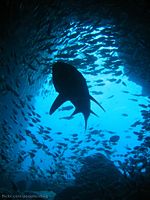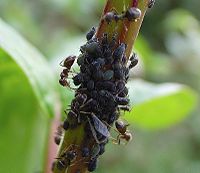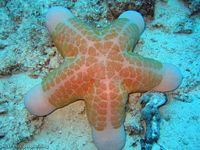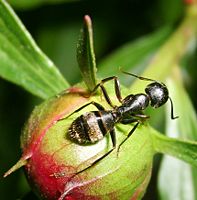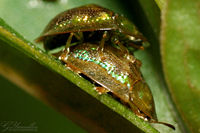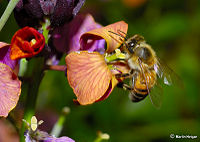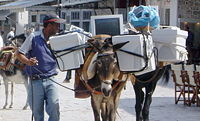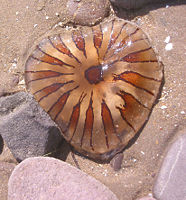Template:Gallery
Jump to navigation
Jump to search
Template for creating image galleries.
Usage
The template takes several named parameters, which set features of the entire gallery and are listed below.
caption
|
— A caption for the gallery. |
width
|
— The size at which the thumbnails should be shown, in px. Default 180. |
lines
|
— The height of the image captions, in lines. 0 to hide all captions. Default 2. |
If all the images are under the same licence and by the same author, set the following parameters to show the licence notice at the top of the gallery rather than below every image.
licence
|
— The type of licence. Only use letters, eg PD, CC, GNU. Use C for ©. |
author
|
— If licence is set, this must be set to the name of the author of the images. |
The named parameters a followed by unnamed parameters specifying the names and captions for up to 30 images.
The code for each image is as follows :
|Image_name_1.png|Image Caption 1 |Image_name_2.png|Image Caption 2 ...etc...
Examples
{{gallery
|width = 200
|lines = 7
|Grey Nurse Shark.jpg|Smaller [[fish]] surround a grey nurse shark (''[[Carcharias taurus]]'') in an [[ocean]] [[reef]] [[cave]].
|Nematode with stained nuclei.jpg|The [[cell]]s of this [[hermaphrodite]] [[nematode]] (''[[Caenorhabditis elegans]]'') are [[stain]]ed so that their [[cell nucleus|nuclei]] glow red.
|Ants and aphids.jpg|In one of the many unique ways animals obtain [[food]], [[rancher ant]]s drink [[sugar]]y juice from [[aphid]]s (''[[Aphis fabae]]'') in return for the aphids' protection, an example of [[symbiosis]] and [[mutualism]].
|Red beard sponge.jpg|This [[red beard sponge]] (Microciona prolifera) washed up onshore. Sponges attach to the ocean floor and passively [[filter feeding|filter feed]] on [[plankton]] that pass through them.
|Granulated sea star.jpg|This granulated [[sea star]] (''[[Choriaster granulatus]]'') is just one of the many animals that populate the [[Great Barrier Reef]].
|Ant on peony.jpg|One of the many thousands of [[ant]] [[species]] crawls on a [[peony]] [[fruit]]. Ants are essential in redistributing resources and aerating the [[soil]] in every [[continent]] except [[Antarctica]].
|Mating tortoise beetles.jpg|[[Insect]]s [[reproduction|reproduce]] in countless ways. These two mating [[tortoise beetle]]s give an example of [[internal fertilization]].
|Meyers frog metamorphosis.png|Most [[frog]]s and [[toad]]s undergo holometabolism: frog larvae, called [[tadpole]]s (or pollywogs), hatch from their [[egg]]s and change into adult frogs, which look and act differently. Tadpoles have [[gill]]s and [[fin]]s and completely live, breathe, and eat in [[water]]. Adult frogs have [[lung]]s and [[leg]]s and live, breath, and eat out of water.
|Bee pollinating a wallflower.jpg|[[Bee]]s, like many [[insect]]s, [[pollination|pollinate]] [[flower]]s—transferring the flowers' [[pollen]] in return for [[nectar]], which the bees drink as [[food]]. Flowers are often [[adaptation|adapted]] to attract and accept only one species of animal.
|Greek donkey with computers.jpg|Donkeys are a [[domestication|domesticated]] animal whose mechanical strength is often harnessed by humans as transportation.
|Irish beach jellyfish.jpg|[[Jellyfish]] are a type of [[cnidarian]]. They are gelatinous predators that float in the [[ocean]], using [[tentacle]]s to bring whatever [[prey]] they catch into their [[mouth]]s.
|Animal phylogeny poster.jpg|A stylized tree of the [[phylogeny]] of animals.
}}
|
{{gallery
|caption = Examples from "The Butler's in Love" series
|width = 120
|lines = 0
|licence = C
|author = Mark Stock
|Butler's_in_love_6.JPG|
|Butler's_in_love_16_-_1991.JPG|
|Stock_bixbutlglass_b5.jpg|
|The_Butlers_in_Love_3.jpg|
|The_Butlers_in_Love_4.jpg|
}}
| Examples from "The Butler's in Love" series© Images: Mark Stock | |||||||||||||||||||||||||||||
|
| |||||||||||||||||||||||||||||
